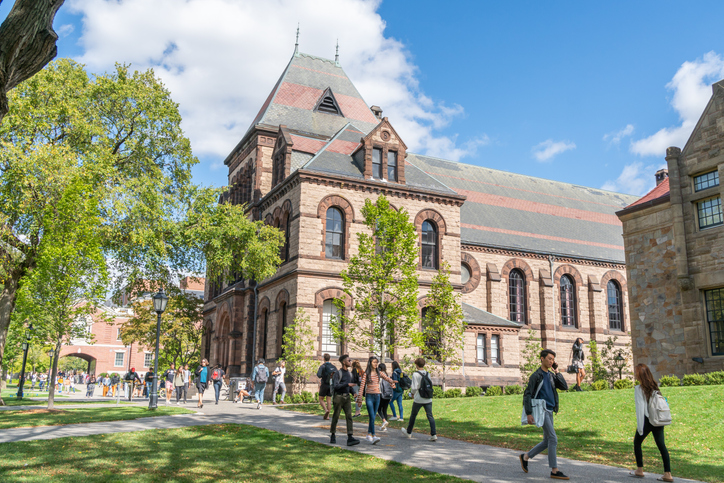The October 26, 2020 New York Times article entitled “Colleges Slash Budgets in the Pandemic, With ‘Nothing Off-Limits,’” does not offer an encouraging outlook for higher education. The article says that every institution, large and small, is being forced to initiate budget cuts to close widening gaps in financial shortfalls. Why? Less students, less fees, less meal and dormitory dollars, and more expenses, accelerating a trend that was already in the making!
Public institutions increasingly forced to do more with less, driving up the price
Combine The Times article with one from Astra Taylor in the October 30, 2020 edition of The Chronicle of Higher Education where she writes, “Unfortunately, recent decades have been particularly hard on America’s fragile system of public higher education: State funding has been slashed, student debt has skyrocketed, and the for-profit college sector exploded. Higher education has become an ever-more costly commodity.” This article also presents a very bleak outlook for higher ed as it is currently constructed.
Equally bad for private ones
And if this is the case for public institutions, it is also the case for selective private colleges and universities, both large and small. This includes those are elite/highly competitive as well as borderline ones. The Times article goes on to point out that even Harvard with a $41 billion-plus endowment is feeling the effects of this pandemic. Yes, even good old Harvard is anticipating a $10 million operating loss and associated cash flow issues because most endowments have funds reserved for specific programs. So, if this is happening to the institution with the largest endowment in the country, imagine what is happening to small schools with little endowment which even in the best of times, just manage to scrape along.
Getting slammed by both sides: the pandemic and shrinking enrollment
At SAMC, we have worked with a number of higher ed institutions over the years helping them develop new “Blue Ocean Strategies,” and I can safely tell you that not one of them had money squirreled away under the category of a “once in a lifetime pandemic”! And if that isn’t enough, this current crisis is layered on top of the fact that there is a shrinking traditional college student population. There are just less kids graduating from high school these days. Declining enrollment caused by the pandemic and by demographics means that either the costs must be substantially decreased or the cost/value curve is going in the wrong direction.
If you believe that universities’ costs/programs need to be maintained, think again. Everything needs to be questioned. I do not have a lot of answers but here are several things that I would consider.
Four important points to think about
- What is the value of a traditional college education and how can we make the payout more enticing for potential students? We are back to the cost/benefit issues. What is the purpose of a higher learning institution? In some cases, it could be preparing students for a trade. If you think about it, we already do this for medicine or engineering or teaching. But aren’t electricians and plumbers also really part of the same trade group, and don’t they need good technical skills to succeed? So why do we not teach these types of programs in college? Wouldn’t this make the graduate a more productive citizen? In one of the Democratic presidential debates, Senator Amy Klobuchar said that we need less sports management majors and more plumbers and electricians. What if she is right? Are traditional colleges the best place to learn these skills or can we deliver them better and more efficiently in some other place? In the past, some said that colleges built the middle class, but today, I am suggesting that having a technical trade skill gets you into the middle class faster.
- Do we have the right mix of courses offered and the right mix of allocated resources? I used to buy into the value of a classical education. The soft sciences and writing skills are necessary in our society but how can we deliver them more efficiently? In some of our social science programs, we train people to pursue their doctoral degrees but what if there are no jobs in their field? Is this a wasted investment? It is great for those who teach and fill the programs, but doesn’t someone somewhere have a responsibility to say “Stop” because there are limited job opportunities? Shouldn’t we at least provide guidance so these graduates leave with employable skills?
I can think of two examples that are close to home. Universities are turning out far more anthropology PhDs (my wife’s field) then there are teaching slots. If you are going to keep graduating them, then at least give them skills so they can be readily productive in society. Many years ago, I had a brilliant cousin who got his PhD in medieval history. With no teaching jobs, he ended up working for the Department of Defense. So, I guess I am asking the question, what are we doing and where is the return into the future?
- How important are athletics in the academic environment? In this crisis, we see large institutions with massive sports programs cutting back because of budget constraints. No one is more sports oriented than I am. I believe in D3 sports where budgets are low and participation is on a non-scholarship basis. Yet, these schools continually get kids coming out because of the love of the game. Is this good? You bet, because it is really “student” participation. But in scholarship-based D1 and D2 colleges, there are very few full sports programs that are self-sustaining. Is this good or bad? I do not know but perhaps this becomes another cost/value analysis. How many dollars do you raise from alumni because of great programs? What is the cost/value trade off?
- Colleges need to equip students with better “work” experiences while they are in school. A hundred years ago when I went to school, I had no work experience and went directly from being an undergraduate to a job without ever working in a real-world setting. Today, I am familiar with many schools that have work study or internship programs. Students are actively engaged in their fields of study and often know what they want to do upon graduation. And often this becomes an entrée into their professional career. But should it be mandatory? Should it be part of the curriculum? I would suggest the answer is yes because there is nothing worse than students graduating with massive debt, no job, no idea about what business is, and worst of all, no skills to successfully make a transition to the workplace.
So, there you are. Brought on by The Times article as well as by our experience working in higher education and understanding the need for change.
To learn more on how higher education needs to adapt to change
- Blog: Is This The Death of Higher Education Institutions?
- Blog: Why Higher Ed Needs To Do A Lot More Than Hand Out Diplomas
- Podcast: Rob Westervelt—Thinking Forward for Higher Education
Does your organization need to learn to embrace change? We can help
During this pandemic and also in the years that will follow, the ability to change and adapt to the new and different will be paramount. At Simon Associates Management Consultants, we specialize in helping organizations of all sizes and across industries rethink their business strategy, realign their company culture, launch their venture, capture customers and grow market share. Perhaps this is the right time for us to help you with your business. Please contact us so we can get started together. We look forward to hearing from you.
From Observation to Innovation,

Andy Simon
Partner, Simon Associates Management Consultants
Info@simonassociates.net



